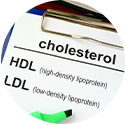We see many active people who come into our office with significant hip pain and are looking for ways to avoid a hip replacement surgery. After years of physically challenging work or years of pounding the tennis courts, these people have been advised to slow down because they have a worsening case of hip osteoarthritis and the more they demand of their hip, the sooner they will need a hip replacement.
Leading up to this recommendation to slow down may have been a series of treatments, including physical therapy, and medications, including anti-inflammatory medications, pain killers, and cortisone injections that provided some temporary relief but did not stop the progression of this person’s continuing hip deterioration.
Is hip replacement the only way when it seems nothing else can help
A patient who is in constant pain and simply wants to return to pain-free daily activities may consider hip replacement as the only way to get back to a pain-free life. Many also have concerns about losing their independence, their ability to walk, drive, even take care of themselves. But hip replacement is a big surgery. Rehab can be a long, demanding process with the possibility of complications. The rehab process itself can make daily living very difficult and some may regret that they have now become “a burden” on their loved ones.
Was the hip replacement as successful as thought?
Now some of you may be thinking, “I know people who did very well with hip replacement.” You would be correct, many people do very well with hip replacement surgery. Some do not. There is also a difference of opinion between some patients and their doctors as to what constitutes a successful hip replacement surgery. A 2018 study (1) suggested that doctors believed their patients were much happier after hip replacement than they really were, and that the surgery’s success may have been overstated.
There is also a suggestion that patient’s do not report many post-hip replacement problems to their doctors or understand what should be reported. A 2020 study (2) from the United Kingdom suggests that “Dislocation, periprosthetic fracture and infection are serious complications of total hip replacement and which negatively impact on patients’ outcomes including satisfaction, quality of life, mental health and function. The accuracy with which patients report adverse events after surgery varies. . .Patients who report adverse effects have worse outcomes than those who do not, regardless of whether the adverse effects can be confirmed by standard medical record review methods. The observed negative trends suggest that patient perception of adverse effects may influence patient outcome in a similar way to those with confirmed adverse effects.”
In that research, it was unclear if patients who had complications, that could not be verified by tradition means, (pain without obvious reason), understood all the aspects of the surgery and they may have had an over expectation of what the hip replacement could do for them.
Many continue to use opioid medications long term after surgery.
Another problem was reported in a June 2020 study.(3) Here patients waiting for a total knee or hip replacement were shown to have higher rates of opioid use, and many continue to use opioid medications long term after surgery. What the researchers found was that if people were using opioids before the hip replacement, there was a strong risk that they would continue to use them after the hip replacement.
Continued use of painkillers following surgery, in the case of the above study, for a minimum of three years after the surgery does give the appearance of a successful hip replacement surgery.
Are prolotherapy, platelet-rich plasma (PRP), cellular regenerative therapies really options to hip replacement?
Simply, hip replacement is recommended to patients where there seems to be no hope that anything else can work. Indeed, the routine patient histories we see are patients recommended to hip replacement because acetaminophen, NSAIDs, pain medications, antidepressants, physical therapy, and cortisone are no longer helping.
The options we offer include prolotherapy, platelet-rich plasma and regenerative therapies, designed to repair the joint rather than simply suppressing the symptoms while the joint continues to degrade. These therapies have enabled us to successfully treat patients for whom conventional therapies did not work. These are injection therapies.
Prolotherapy injections are typically dextrose and other natural substances placed precisely into damaged tendons, ligaments, joints or soft tissue. This therapy initiates a natural healing process which can strengthen and repair damaged ligaments and tendons that stabilizes the joint and reduces inflammation and pain.
PRP is derived from a patient’s own blood that consists of a combination of growth factors and platelets. To create platelet-rich plasma therapy, a small sample of your blood is drawn, similar to a lab-test sample. The blood is placed in a centrifuge which separates the platelets from the other components. The concentrated platelet-rich plasma is then injected into and around the point of injury, jump-starting and significantly strengthening the body’s natural healing signal. Because the patient’s own blood is used, there is no risk of a transmissible infection and a very low risk of allergic reaction.
Regenerative Therapies: We utilize a variety of innovative therapies, including peptides, to help repair damaged tissue and restore normal cellular function.
Please note that there are cases of advanced hip osteoarthritis where our treatments may not be a realistic option.
Let’s explore some new and recent research:
A January 2020 (4) study in the journal Arthroscopy compared the clinical outcomes of 4 intra-articular injection treatments (platelet-rich plasma, hyaluronic acid, corticosteroid, and hyaluronic acid plus platelet-rich plasma) for hip osteoarthritis. The research team examined 11 randomized controlled trials with a total of 1,060 patients.
They recommended corticosteroid injections to provide the short term. PRP, they suggested provided pain relief for up to 6 months.
Let’s point out that was a comparison of initial treatments. People who get PRP injections are typically recommended to follow-up treatments.
An April 2021 paper (5) summarized the use of PRP this way:
“PRP therapy has advantages such as rapid preparation and technical simplicity; it is also a point-of-care procedure, and can be carried out in-office due to its minimal invasiveness, permitting intra-articular, intra-tendinous or even intra-osseous injection. As a result of its autologous origin, it exhibits a unique safety profile, lacking many drug-related side effects or interactions. In osteoarthritis), PRP can interfere in the catabolic and inflammatory cascade (work as an anti-inflammatory), in order to promote anabolic responses.
In February 2021 orthopedic surgeons lead by the Department of Orthopedic Surgery at the Mayo Clinic noted (6) that they are at an “exciting crossroads in medicine, where hip biologic therapies (non-surgical treatments) are evolving and (becoming) increasingly available.” While hip replacement have shown good results and still have a major role to play in treatment of advanced hip osteoarthritis, newer, regenerative approaches (such as those mentioned in this article) have the potential to effectively delay or reduce the requirement for such invasive procedures.
A February 2020 (7) study found Prolotherapy injections in patients who developed osteoarthritis due to developmental dysplasia of the hip, found that Prolotherapy is a superior to exercise or physical therapy programs and could provide significant improvement for clinical outcomes and might delay the need for surgery.
Here at the Magaziner Center for Wellness, the goal of our program is the accelerating and enhancing the body’s natural healing process with these treatments to help patients avoid a hip replacement surgery.
If you would like to explore more information, please contact our office so we can start a conversation with you.
References:
1 Wu X, Sun H, Zhou X, Wang J, Li J. Quality assessment of systematic reviews on total hip or knee arthroplasty using mod-AMSTAR. BMC Med Res Methodol. 2018 Mar 16;18(1):30. doi: 10.1186/s12874-018-0488-8. PMID: 29548276; PMCID: PMC5857117.
2 Carpenter CV, Wylde V, Moore AJ, Sayers A, Blom AW, Whitehouse MR. Perceived occurrence of an adverse event affects patient-reported outcomes after total hip replacement. BMC Musculoskeletal Disorders. 2020 Dec;21(1):1-8.
3 Pryymachenko Y, Wilson RA, Abbott JH, Dowsey MM, Choong PFM. Risk Factors for Chronic Opioid Use Following Hip and Knee Arthroplasty: Evidence from New Zealand Population Data [published online ahead of print, 2020 Jun 27]. J Arthroplasty. 2020;S0883-5403(20)30684-7. doi:10.1016/j.arth.2020.06.040
4 Zhao Z, Ma JX, Ma XL. Different Intra-articular Injections as Therapy for Hip Osteoarthritis: A Systematic Review and Network Meta-analysis [published online ahead of print, 2020 Jan 6]. Arthroscopy. 2020;S0749-8063(19)30885-0. doi:10.1016/j.arthro.2019.09.043
5 Kruel AV, Ribeiro LL, Gusmão PD, Huber SC, Lana JF. Orthobiologics in the treatment of hip disorders. World Journal of Stem Cells. 2021 Apr 26;13(4):304.
6 Hevesi M, Jacob G, Shimomura K, Ando W, Nakamura N, Krych AJ. Current hip cartilage regeneration/repair modalities: a scoping review of biologics and surgery. International Orthopaedics. 2021 Feb;45(2):319-33.
7 Gül D, Orsçelik A, Akpancar S. Treatment of Osteoarthritis Secondary to Developmental Dysplasia of the Hip with Prolotherapy Injection versus a Supervised Progressive Exercise Control. Med Sci Monit. 2020;26:e919166. Published 2020 Feb 11. doi:10.12659/MSM.919166





































Recent Comments